8 application scenarios of AR augmented reality in retail
The pace of technological advancement is very fast, and retail stores and marketers are working very hard to keep up with the pace of new technology. Making full use of technological innovation to provide customers with the best shopping experience has increasingly determined the key to the success of offline physical retail stores. Recently, a very hot new technology applied to the retail industry is AR augmented reality, but many people still don't know how to use this technology.
AR and VR technologies are accompanied. Both show the user a digitally generated virtual environment in which users can naturally interact in a variety of ways. For example, by turning the head to manipulate rather than the mouse operating mode like a traditional computer.
There is a certain degree of difference between AR and VR. VR isolates users from the real world and is completely immersed in the virtual world. AR is the fusion of virtual and real world.
The concept of AR and VR has been around for a long time and has always been an imagination in science fiction. Nowadays, for the retail industry, AR is an exciting technology with great prospects for promotion and marketing in retail stores.
Although Microsoft introduced the cool HoloLens AR head display, the beauty of the AR application is that it does not need to be supported by such a hardware. Just install an AR app on your smartphone and you can start to experience AR shopping, or place an AR device in the store without any interruptions.
AR is an exciting technology that makes it easy to create applications in the retail industry. In today's highly competitive market environment, it is crucial to find ways to gain user attention and loyalty.
Whether it is online shopping or offline stores, AR can be applied. Here are 8 AR retail cases:

1. Glasses e-commerce Warby Parker
Warby Parker is a well-known eyewear e-commerce company that has long explored how AR technology can be applied to the shopping experience. They invented a virtual AR binocular distance measurement tool that is very simple but very effective and has few thresholds to use. Basically anyone can use it without the hassle of expensive equipment.
There are also several optical retailers who can easily try on glasses online. The user uploads a photo of himself and then overlays the eyeglasses on the face in a matter of seconds. For glasses e-commerce, try-on is a big problem, and AR technology solves this problem easily.
Warby Parker has built a free AR try-on technology and then took a step forward. The company is now also using AR technology to adjust the lenses that optimize eyeglasses. Users can upload a photo of their own credit card in front of the camera. Because the credit card is standard size, the AR application can calculate the user's pupil distance and binocular distance by credit card, so that the lens can be calibrated.
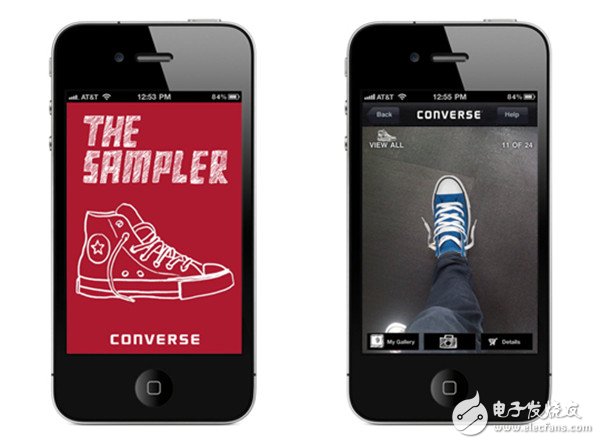
2. Converse shoes
The canvas sneaker brand Converse also has the idea of ​​using AR technology to promote sales, but they go further. Converse has developed a sports shoe sampler app that allows customers to see the effects of wearing various shoes in their own homes, saving a lot of trouble and time for trying on.
The customer sits on a chair or sofa and points the smartphone at his or her feet. The Sneaker Sampler App offers a range of different styles of shoes that can be stacked with the customer's feet. Just look at the phone screen and the customer can see the actual effect of putting on the shoes.
AR retail can definitely bring surprises to customers, and Converse makes good use of this by integrating the sharing functions of social software. Customers can save virtual try-on pictures in the app and then share them with friends on social platforms. When people see photos, they will naturally ask for advice on friends' shoes, which will lead to good word-of-mouth communication.
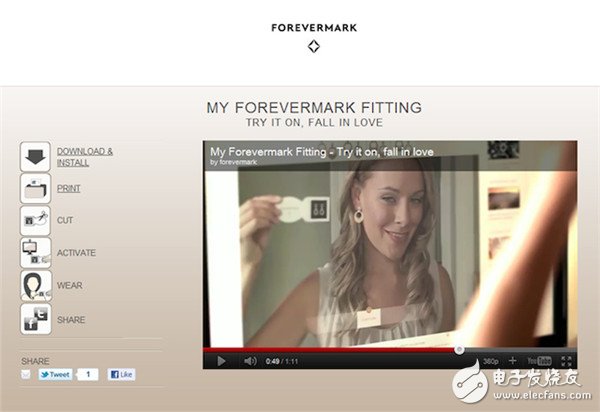
3. De Beers Diamonds
De Beers Diamond's approach to AR technology is very high. This jewellery and diamond company uses AR technology to promote its eternal inscription diamonds in a unique way.
Users can visit De Beers's eternal inscription diamond official website, you can download and print the pattern of jewelry diamonds. The user holds the pattern in front of the camera, and the AR application displays the actual effect of the user wearing the eternal inscribed diamond in different light on the screen.
This effect is very shocking, just like magic. De Beers has thus gained a lot of online word of mouth and praise. AR technology can make it look more realistic when it integrates actual goods. Especially in the high-end market of jewellery and diamonds, it is very important to give users a strong and unforgettable impression.
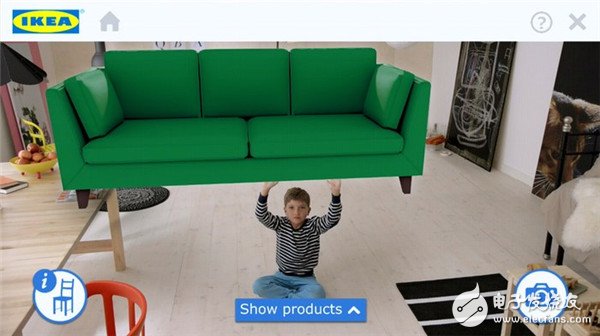
4. IKEA
Well-known furniture manufacturer IKEA uses the AR Technology Award to create a shopping center for consumers. One of the biggest problems for furniture retailers is that customers in the store don't know if the furniture matches their home. In the past, furniture retailers either asked customers to measure the size of their home space or hired interior designers to help make decisions.
The new IKEA furniture catalogue features an innovative AR feature that allows customers to shop at home, see if new furniture is right, and put the furniture virtually anywhere in the home. This AR application can present the 3D effect of the furniture. The customer can see the various furniture in the home screen on the screen of the mobile phone, and can walk around the furniture to see if it is suitable from different angles.
This is a great example of both marketing and practical value. Any customer who has used it has said that the process of selecting furniture has become easier and more fun.
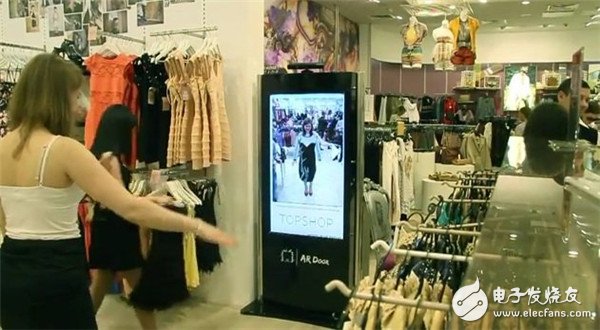
5. Topshop fast fashion brand
AR technology has proven to be very effective in attracting and retaining customers. Russian clothing retailer Topshop created an AR fitting room application.
Topshop placed an AR interactive screen at the door of the flagship store in Moscow. Standing in front of the AR interactive screen, customers can see themselves like a mirror. With gestures and virtual buttons, customers can overlay their clothes on their bodies.
Putting this AR virtual fitting room in a public space allows customers and friends to help us see which clothes look best. Shoppers can quickly try on a lot of clothes and don't need to actually undress and dress.
This application is very fleeted, customers do not need any special equipment and do not need any training. Reducing the cost of learning for customers is critical to the AR fitting room becoming popular.
6. Shiseido
Japanese cosmetics brand Shiseido adopted the idea of ​​Topshop's AR fitting room. In the cosmetics retail store, a touch screen and camera are placed. Customers can take photos and then virtually try out a variety of styles of cosmetics.
The next step is similar to the makeup programs that many women are familiar with. Shiseido's AR software intelligently analyzes customer choices and recommends new products, just like a makeup expert.
Like trying on clothes, makeup in a cosmetics store is also very time consuming and sometimes even unpleasant. Shiseido's AR application simplifies the trial process of cosmetics and increases sales and customer engagement. Many customers like this virtual mirror very much, and the result is that Shiseido's store is more popular than its peers.

7. AA American Apparel
AA American App's AR App Shopping Assistant has opened up AR online and offline shopping. AA American Apparel is concerned that many consumers are staring at the physical store while staring at the phone or tablet in their hands, so they decided to embrace this change.
Similar to many AR shopping apps, AA American Apparel's Shopping Assistant app allows customers to scan product reviews for product reviews, view related products, and all color clothing in the same style. The user experience of the app is very good, you can identify the various styles of clothing on the shelf without scanning the labels or QR codes on the clothes.
Converging online and offline is the trend of the retail industry. It is inevitable for customers to browse online and store online while checking prices and viewing product reviews. By providing its own AR applications, AA American apparel has improved its sales by complying with the trend of online and offline integration.
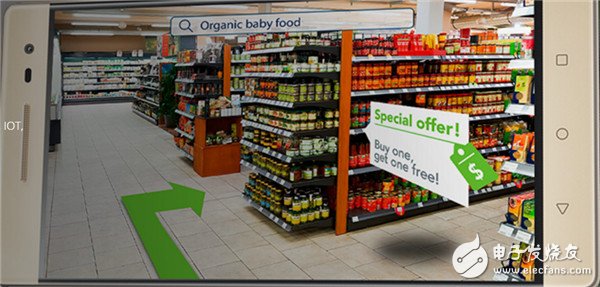
8. Walgreens chain pharmacy
Walgreens is one of the largest chain pharmacies in the United States and is currently testing AR technology applications at its nationwide pharmacies. Walgreen is known for its huge size and complex business, and hopes to make its customers' shopping more convenient with AR technology.
When the customer is shopping at the Walgreens chain, there is a tablet on the shopping cart with an AR map application that shows the customer's current in-store location in real time. Customers can search for items they want to buy within the app and then navigate directly to the shelves of these items.
From a marketing perspective, AR technology offers Walgreens some interesting opportunities. On the AR map, discounted items and coupons will be highlighted, and these offers will automatically pop up when customers walk to the shelves of these items.
By using a custom flat-panel camera, this AR map application can pinpoint customer locations with margins within a few inches. This precision is enough to attract customers to the merchandise shelves they want. By integrating Walgreen's existing loyalty rewards program, this AR app can record shoppers' shopping habits and then push targeted events and discounts.
The best AR shopping app isn't necessarily the most unique and fancy, but the one that delivers the most information to customers.
Original author: Yariv Levski
Original address: https://appreal-vr.com/blog/ar-in-retail-shopping/
Translator: An Fushuang, senior AR practitioner
For 24 Wall Charger with different plugs for choose, the input voltage 100V~240V 50/60Hz suits for worldwide use. which are popularly used for HD player, DVD, LCD TV, surveillance camera, LED display, LED light, USB hub etc.
24V wall mount Adapter has common 24V 500MA, 24V 1A, 24V 2A etc, the dc plug size has 5.5*2.5mm, 5.5*2.1mm and so on,
Yidashun's wall charger has intelligent protection system, to support over-current, over-voltage , short-circuit, overcharge protection etc, and Yidashun's wall mount power adapter has smart IC solution, high efficiency, energy saving and small ripple etc advantages.

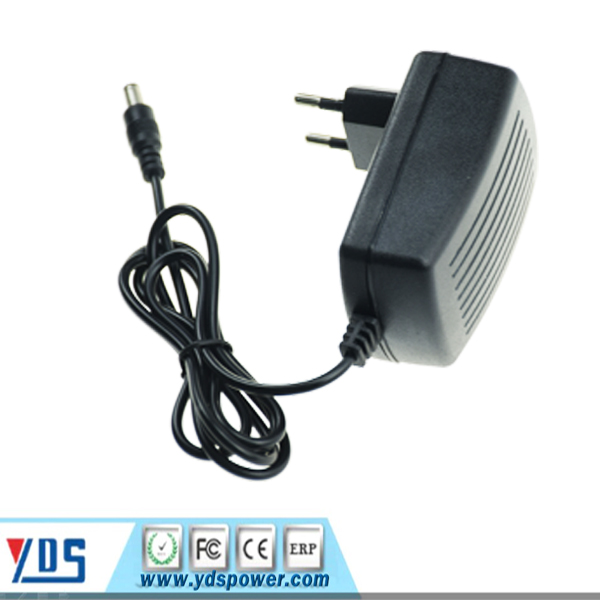
24V Wall Charger,Tablet Charger,24V Wall Battery Charger,24V Wall Power Charger
Shenzhen Yidashun Technology Co., Ltd. , https://www.ydsadapter.com